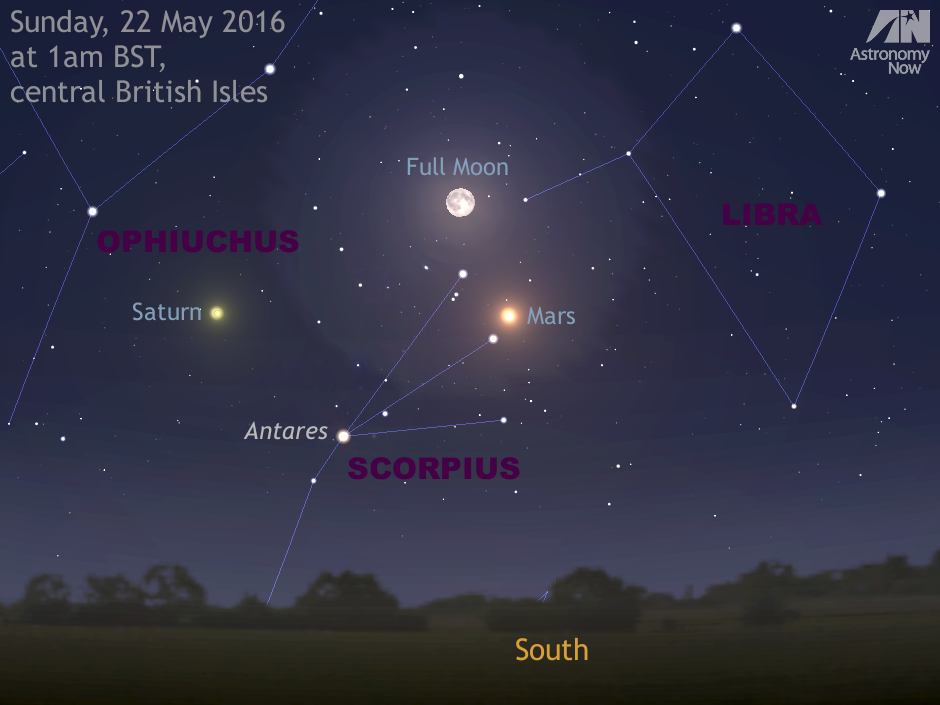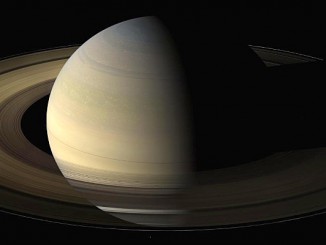
While one may logically assume that 22 May is also the date that Mars is closest to the Earth, this is not actually the case. Owing to Mars’ eccentric orbit, the planet does not make its closest approach to us until 10:30pm BST on Monday, 30 May.
At their closest, the distance between the centres of Earth and Mars will be 0.5032 astronomical units, or 46.8 million miles (75.3 million kilometres). As May draws to a close, the Red Planet will reach a maximum angular size of 18.6 arcseconds when a telescope magnification of 100x will enlarge it to the same size as an average full Moon appears to the unaided eye.
When Mars is closest to Earth it is an imposing naked-eye sight in the night sky, glowing with a steady orange-red hue at a magnitude of -2 or more, far outshining any star. Sadly for UK-based observers, however, the Red Planet will be very low in the southern sky, scarcely 15 degrees above the horizon as seen from the centre of the British Isles.
Making the most of Mars low in the sky seen from the UK
There is no denying that observing Mars from the British Isles in May-June 2016 will be a challenge, but there are ways that you can mitigate shimmering high-magnification planetary views. Always ensure that telescopes have adequate time to cool down to the nighttime air (uncap reflectors to ventilate the tube) before making critical observations and try to avoid setting up on concrete or asphalt; grass is best. Also, try not to observe Mars over the roof tops of houses where turbulent warm air currents may rise.
If at all possible, do try to observe Mars within half an hour or so of the time it transits (see our Almanac for local times) so that it is as high as possible above your southern horizon. While there is not much we can do about poor seeing arising in the atmosphere, those nights that are slightly misty when a high pressure system sits above us often show the steadiest planetary views.
Even if the seeing is otherwise good you may experience atmospheric dispersion, where the upper and lower limbs of the planet may appear to have prismatic blue and red fringing, respectively, due to our atmosphere acting like a weak lens. You can purchase a dedicated atmospheric dispersion filter to help counteract this, or simply a yellow/orange filter will lessen the chromatic aberration.
Which side of Mars is facing Earth tonight?
In quality telescopes of 6-inch (15-cm) aperture and larger, Mars reveals a wealth of surface detail when seeing conditions are good. A 3-inch (7.6-cm) ‘scope is sufficient to reveal larger features such as the Syrtis Major or Mare Acidalium. For this opposition, Mars’ northern pole is tipped about 10 degrees toward Earth in a position angle of about 37 degrees. To help you identify the main features visible through to the end of June 2016, make use of our interactive Mars Mapper web app below, or visit its home page.
Inside the magazine
Find out all you need to know about observing Mars and the other solar system bodies currently in the night sky in the May 2016 edition of Astronomy Now.
Never miss an issue by subscribing to the UK’s biggest astronomy magazine. Also available for iPad/iPhone and Android devices.




